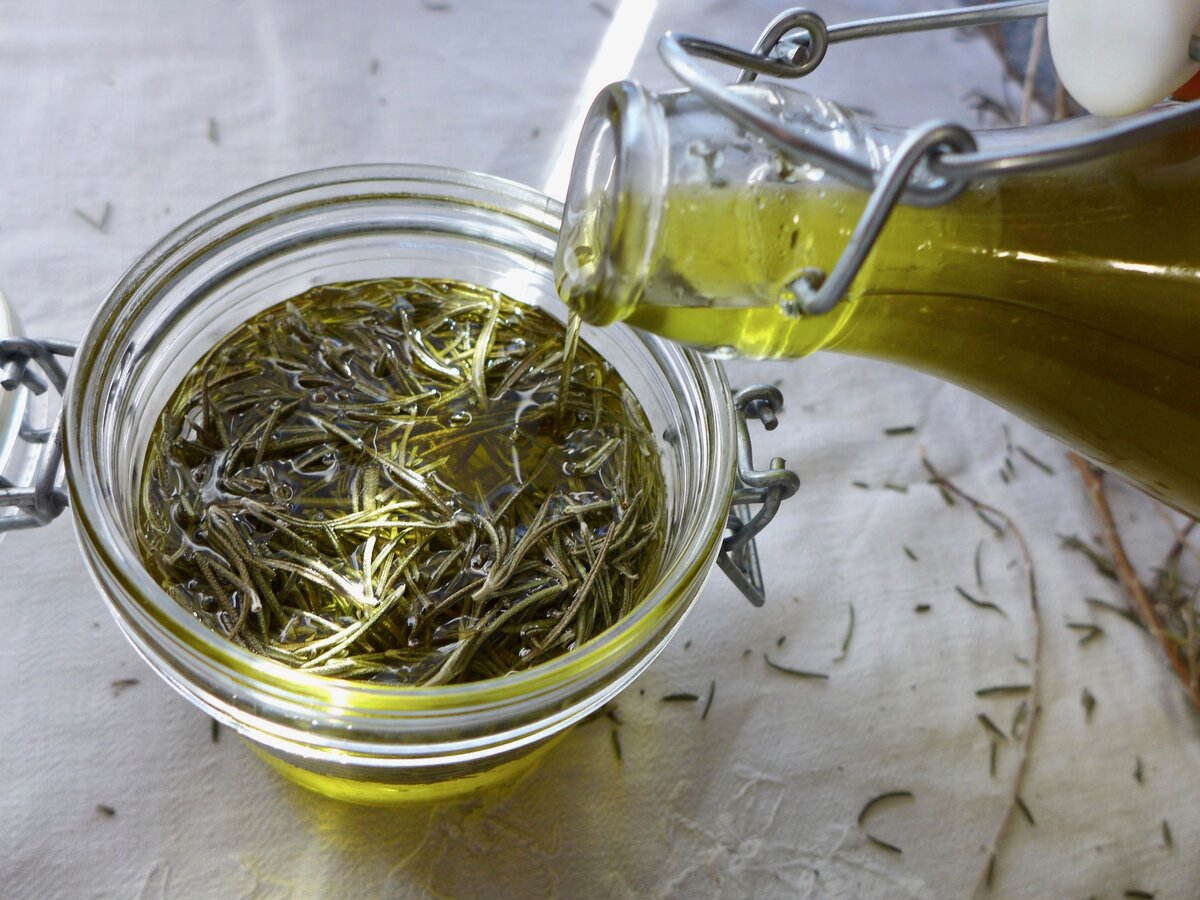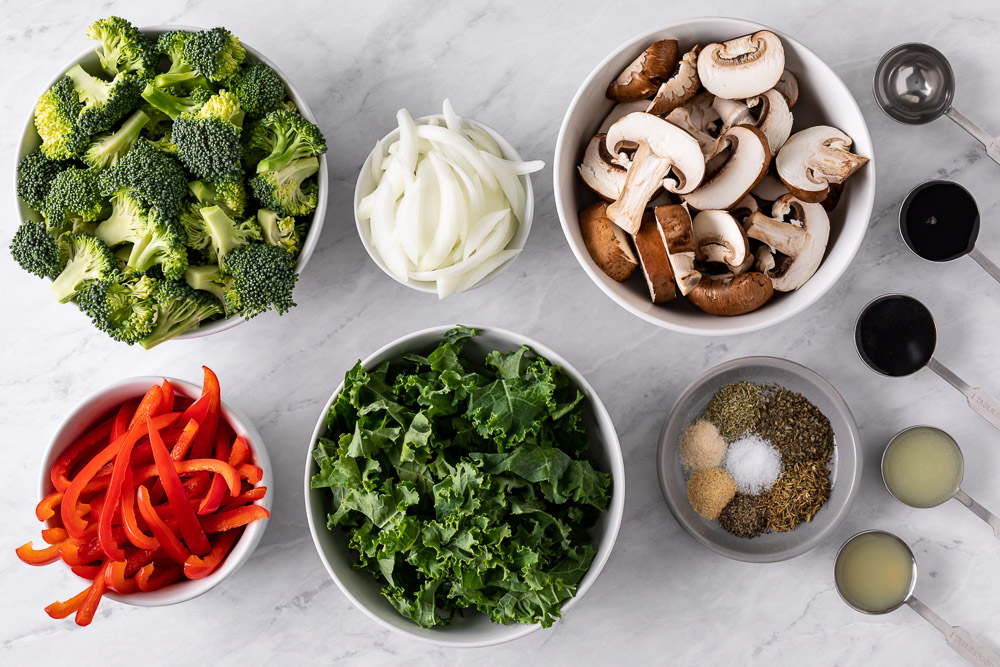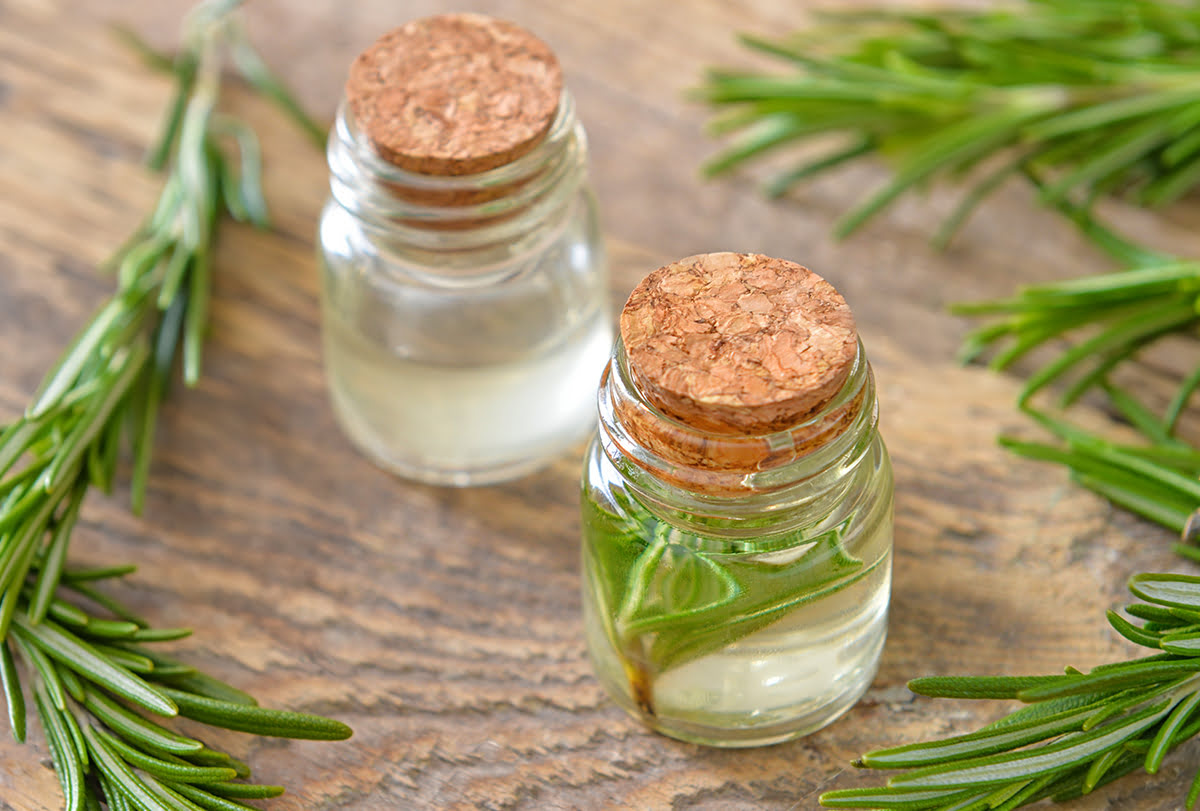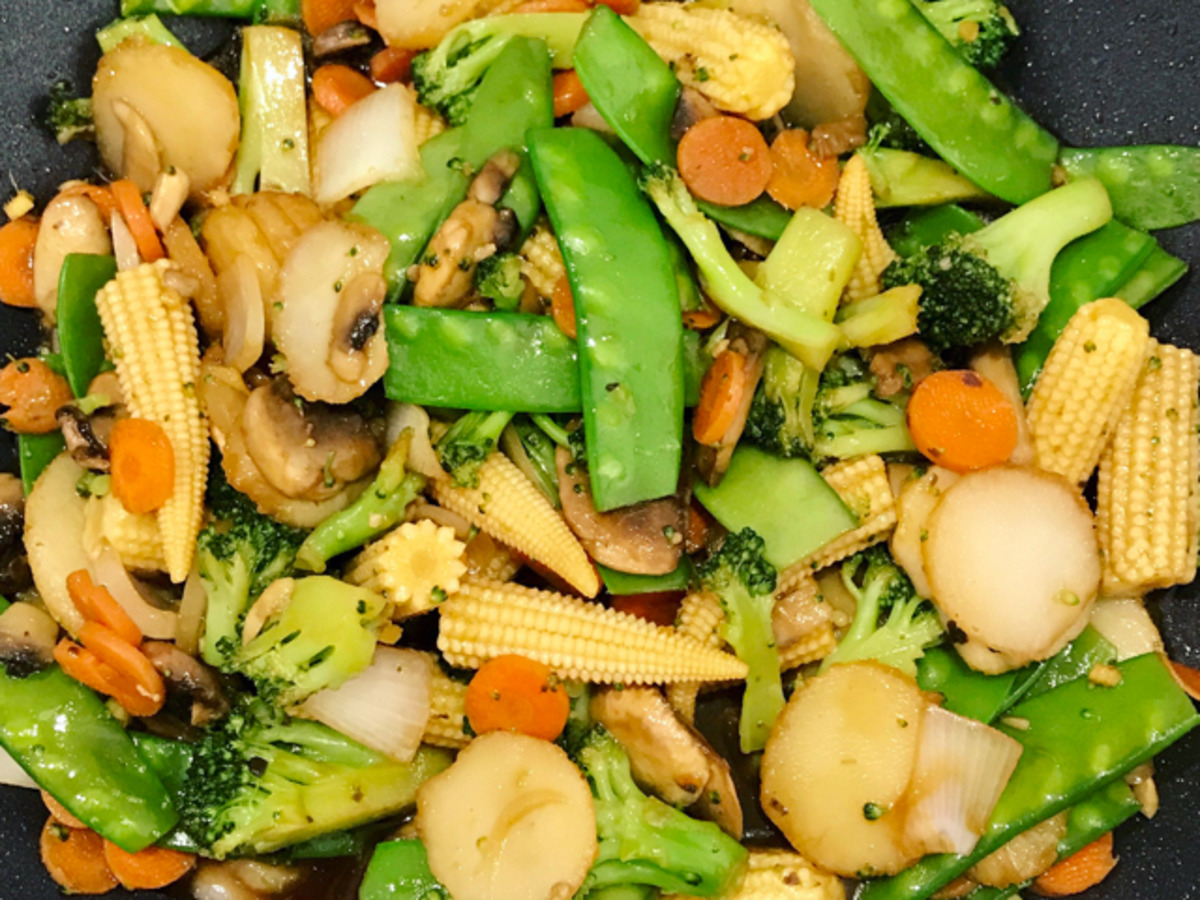Home>Gardening News and Trends>Latest News>What Vegetables Are Used To Make Vegetable Oil
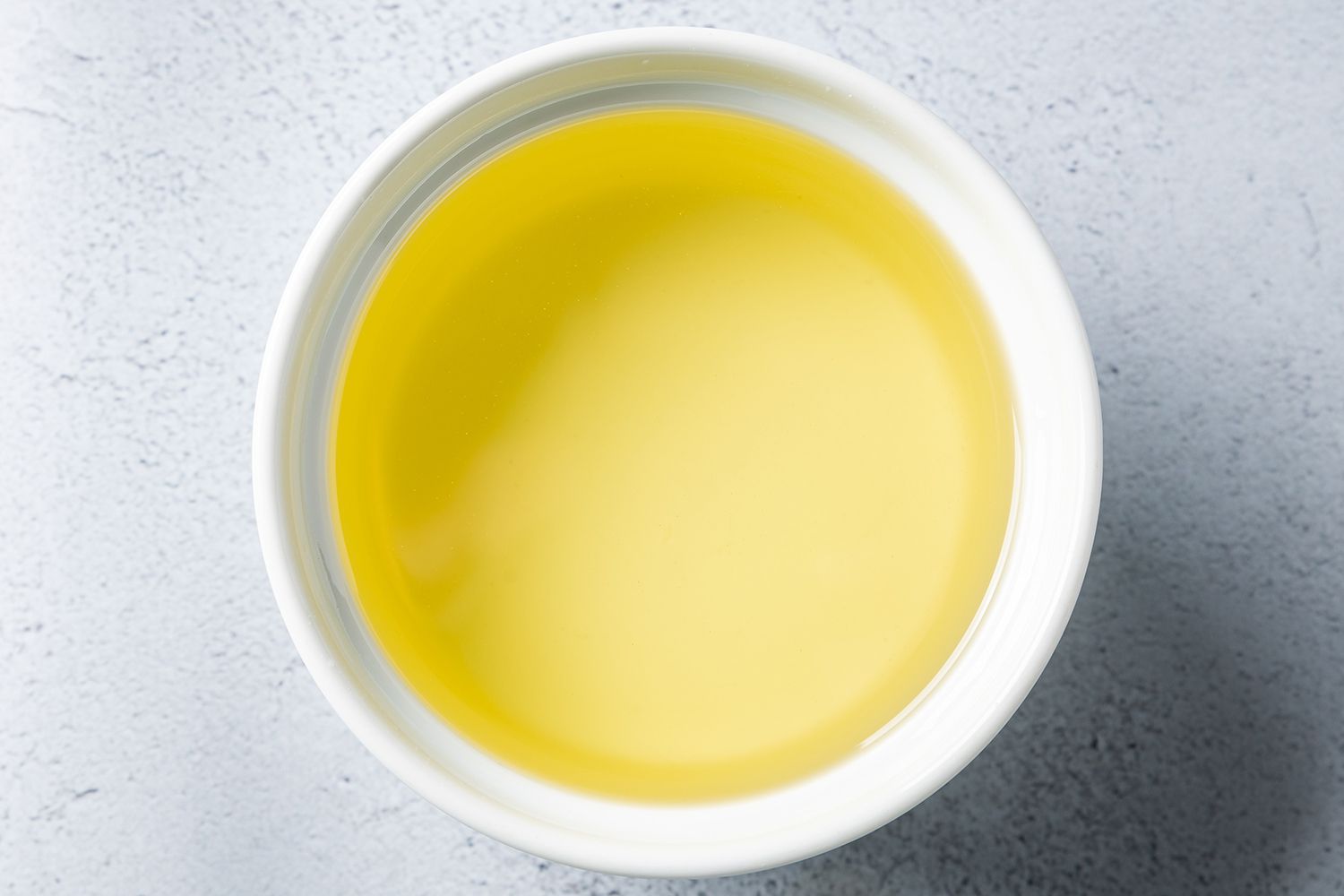

Latest News
What Vegetables Are Used To Make Vegetable Oil
Modified: January 22, 2024
Discover the latest news on vegetable oil production. Learn about the different types of vegetables commonly used to make vegetable oil and their benefits.
(Many of the links in this article redirect to a specific reviewed product. Your purchase of these products through affiliate links helps to generate commission for Chicagolandgardening.com, at no extra cost. Learn more)
Table of Contents
Introduction
Vegetable oil is a versatile and widely used ingredient in cooking and baking. It is an essential component of many culinary dishes and contributes to the flavor, texture, and nutritional value of the food we consume. But have you ever wondered what vegetables are used to make vegetable oil? In this article, we will explore the types of vegetables commonly used in the production of vegetable oil.
Vegetable oil is derived from various plant sources through a process called extraction or pressing. The oil is obtained by separating the oil-rich seeds, fruits, or nuts from the plant and extracting the oil through mechanical or chemical means. The resulting vegetable oils are then refined and processed into the familiar products we find on our supermarket shelves.
Not all vegetables are suitable for oil production. Certain vegetables have a relatively high oil content and are cultivated specifically for this purpose. These oil-rich vegetables undergo careful extraction to obtain the oil, which is then further refined to meet the desired quality and shelf-stability.
In recent years, there has been a growing interest in healthier and more sustainable cooking oils. As a result, the market for vegetable oils has expanded beyond the traditional options, giving rise to a variety of plant-based oils with unique flavor profiles and nutritional benefits.
In the following sections, we will delve into some of the most widely used vegetables in the production of vegetable oil. From the ubiquitous soybean oil to the popular olive oil, we will explore the characteristics and uses of each vegetable oil.
Vegetable Oils: An Overview
Vegetable oils are fats that are extracted from various plant sources. They are liquid at room temperature and are widely used in cooking, baking, and food preparation. Vegetable oils provide essential fatty acids and serve as a source of energy in our diets.
There are several types of vegetable oils available, each with its own unique characteristics and uses. Some common examples include soybean oil, canola oil, sunflower oil, palm oil, corn oil, olive oil, and coconut oil. These oils differ in terms of their flavor, smoke point, nutritional composition, and culinary applications.
One of the most commonly used vegetable oils is soybean oil. It is extracted from soybeans, which are rich in oil content. Soybean oil has a mild flavor and a high smoke point, making it suitable for various cooking methods, including frying and sautéing. It is also commonly used as a base for salad dressings and marinades.
Canola oil is another popular vegetable oil, known for its light flavor and versatility. It is derived from the seeds of the canola plant, which is a type of rapeseed. Canola oil has a neutral taste and a high smoke point, making it suitable for both cooking and baking.
Sunflower oil, as the name suggests, is extracted from sunflower seeds. It has a mild flavor and a light texture, making it ideal for frying, baking, and salad dressings. Sunflower oil is also rich in vitamin E, which is an antioxidant that helps protect our cells from damage.
Palm oil, derived from the fruit of the oil palm tree, is widely used in processed foods, particularly in the production of margarine and shortening. It has a distinct reddish-orange color and a creamy texture. Palm oil has a high smoke point, making it suitable for high-temperature cooking methods.
Corn oil is extracted from the germ of corn kernels and is commonly used for frying and sautéing. It has a mild flavor and a high smoke point, making it a versatile option in the kitchen. Corn oil is also low in saturated fat and cholesterol, making it a healthier choice compared to some other vegetable oils.
Olive oil, a staple in Mediterranean cuisine, is derived from olives. It comes in various grades, including extra virgin, virgin, and regular olive oil. Extra virgin olive oil is considered the highest quality and is used primarily for drizzling over salads or dipping bread. It has a distinct fruity flavor and aroma.
Coconut oil is unique among vegetable oils because it is solid at room temperature. It is derived from the meat of mature coconuts and has a rich, tropical flavor. Coconut oil is commonly used in baking, as well as in dishes that benefit from its distinct taste, such as curries and stir-fries.
These are just a few examples of the vegetable oils available in the market. Each oil has its own set of characteristics and culinary uses, allowing for a wide range of flavors and applications in the kitchen. By understanding the different types of vegetable oils and their properties, you can make informed choices when it comes to selecting the most suitable oil for your cooking needs.
Common Vegetables Used for Vegetable Oil Production
There are several vegetables that are widely used for the production of vegetable oil. These vegetables have a high oil content, making them suitable for oil extraction. Let’s explore some of the most common vegetables used in the production of vegetable oil:
- Soybean: Soybean oil is one of the most widely consumed vegetable oils in the world. Soybeans are rich in oil, and the oil is extracted through a process of crushing and separating the soybeans. Soybean oil has a mild flavor and a high smoke point, making it suitable for a variety of cooking methods.
- Canola: Canola oil is derived from the seeds of the canola plant, which is a type of rapeseed. Canola oil has gained popularity in recent years due to its nutritional benefits and versatility. It has a light flavor and a high smoke point, making it suitable for frying, baking, and sautéing.
- Sunflower: Sunflower oil is extracted from sunflower seeds and is known for its light flavor and versatility. It has a high smoke point, making it suitable for high-temperature cooking methods. Sunflower oil is commonly used in frying, baking, and as a base for salad dressings.
- Palm: Palm oil is derived from the fruit of the oil palm tree. It is widely used in the food industry due to its unique properties. Palm oil is semi-solid at room temperature and has a distinct reddish-orange color. It has a high smoke point and is commonly used in the production of margarine, shortening, and processed foods.
- Corn: Corn oil is extracted from the germ of corn kernels. It has a mild flavor and a high smoke point, making it suitable for frying and sautéing. Corn oil is commonly used in both commercial and home cooking and is low in saturated fat and cholesterol.
- Olive: Olive oil is a staple in Mediterranean cuisine and is derived from olives. There are different grades of olive oil, including extra virgin, virgin, and regular olive oil. Extra virgin olive oil is considered the highest quality and has a fruity flavor and aroma. Olive oil is commonly used for drizzling over salads, dipping bread, and cooking.
- Coconut: Coconut oil is unique among vegetable oils as it is solid at room temperature. It is derived from the meat of mature coconuts and has a rich, tropical flavor. Coconut oil is commonly used in baking, as well as in dishes that benefit from its distinct taste, such as curries and stir-fries.
These vegetables serve as excellent sources for vegetable oil production and contribute to the vast range of culinary oils available in the market. Their distinctive flavors, varied smoke points, and nutritional profiles make them versatile options for various cooking techniques. Whether you’re looking for a neutral oil for frying or a flavorful option for drizzling over salads, these vegetable oils can cater to your culinary needs.
Soybean
Soybean oil is one of the most widely used vegetable oils in the world. It is derived from soybeans, which are known for their high oil content. Soybean oil is obtained through a process of crushing and separating the soybeans, followed by refining and processing to obtain the final product.
One of the key reasons for the popularity of soybean oil is its neutral flavor and versatile nature. It has a mild taste that doesn’t overpower other ingredients, making it suitable for a wide range of culinary applications. Additionally, soybean oil has a high smoke point, which means it can withstand high cooking temperatures without breaking down or producing smoke.
The high smoke point of soybean oil makes it ideal for frying, sautéing, and deep frying. Its ability to withstand heat and maintain stability during cooking ensures that the food retains its taste, moisture, and texture. Whether you’re frying crispy chicken, stir-frying vegetables, or preparing tempura, soybean oil can handle the heat.
In addition to its versatility in cooking, soybean oil has nutritional benefits as well. It is low in saturated fat and contains a good amount of polyunsaturated fats, particularly omega-6 fatty acids. These fatty acids are essential for our body and play a role in maintaining healthy cell function.
Soybean oil is also a good source of vitamin E, an antioxidant that helps protect our cells from damage caused by free radicals. It contributes to the overall antioxidant capacity of the oil, making it beneficial for our health.
Another advantage of soybean oil is its affordability and widespread availability. It is produced on a large scale in many countries, making it accessible to consumers around the world. Its reasonable price point and versatility make it a popular choice for both home cooks and food manufacturers.
It’s worth noting that while soybean oil offers numerous benefits, moderation is key. Like any other oil, it is high in calories, so it’s important to use it in moderation as part of a balanced diet.
In summary, soybean oil is a widely used vegetable oil known for its neutral flavor, high smoke point, and versatility in cooking. It is a good source of polyunsaturated fats and vitamin E, making it a healthy choice when consumed in moderation. Whether you’re frying, sautéing, or deep frying, soybean oil can be your go-to option for a variety of culinary needs.
Canola
Canola oil is a popular vegetable oil derived from the seeds of the canola plant, a type of rapeseed. It is widely used in cooking and baking due to its neutral flavor, versatility, and numerous health benefits.
One of the key advantages of canola oil is its light flavor, which allows the natural flavors of other ingredients to shine through in dishes. It does not overpower the taste of the food but rather enhances it. This makes canola oil suitable for a wide range of culinary applications, from sautéing and stir-frying to baking and salad dressings.
Canola oil has a high smoke point, which means it can withstand higher cooking temperatures without breaking down and producing smoke. This property makes it ideal for frying and deep-frying, as it helps to maintain the integrity and crispness of the food being cooked.
In terms of nutritional composition, canola oil is low in saturated fat and contains a good balance of different types of fats. It is high in monounsaturated fats, which are considered heart-healthy and may help reduce the risk of cardiovascular diseases when consumed as part of a balanced diet.
Canola oil is also a good source of omega-3 fatty acids, which are essential for brain health and have anti-inflammatory properties. Omega-3 fats are typically found in fatty fish, so incorporating canola oil into your diet can be a beneficial way to increase your intake, especially for those who don’t consume fish regularly.
Furthermore, canola oil is rich in vitamin E, an antioxidant that helps protect our cells from damage caused by free radicals. It also contains phytosterols, plant compounds that are believed to help lower cholesterol levels.
Another noteworthy aspect of canola oil is its stability. It has a long shelf life and does not spoil easily, thanks to its relatively high levels of natural antioxidants and low levels of saturated fats. This makes it a practical and economic choice for both home cooking and commercial food production.
In summary, canola oil is a versatile and healthy vegetable oil with a neutral flavor and high smoke point. It is low in saturated fat, rich in monounsaturated fats, omega-3 fatty acids, and vitamin E. Whether you’re frying, baking, or making salad dressings, canola oil can be a versatile and nutritious choice for a wide variety of dishes.
Sunflower
Sunflower oil, as the name suggests, is derived from the seeds of the sunflower plant. It is a widely used vegetable oil known for its light flavor, versatility, and numerous health benefits.
One of the key characteristics of sunflower oil is its mild taste. It has a subtle flavor that doesn’t overpower the natural taste of other ingredients in a dish, making it suitable for a wide range of cooking applications. From sautéing and stir-frying to baking and salad dressings, sunflower oil adds a delicate touch to various culinary creations.
Sunflower oil has a high smoke point, which means it can withstand high temperatures during cooking without breaking down or producing harmful smoke. This makes it ideal for frying, deep-frying, and other high-heat cooking methods. The high smoke point allows the food to retain its texture and flavor, resulting in delicious and perfectly cooked dishes.
In terms of nutritional value, sunflower oil is a good source of vitamin E, which is an antioxidant that helps protect our cells from damage caused by free radicals. Vitamin E also contributes to maintaining healthy skin and a strong immune system.
Additionally, sunflower oil is low in saturated fat and contains a good balance of polyunsaturated and monounsaturated fats. These heart-healthy fats help maintain healthy cholesterol levels and reduce the risk of cardiovascular diseases when consumed as part of a balanced diet.
Another benefit of sunflower oil is that it is rich in phytosterols, plant compounds that have been linked to lowering cholesterol levels. Phytosterols are believed to reduce the absorption of cholesterol in the body, making sunflower oil a potentially helpful addition for individuals striving to maintain heart health.
It is important to note that there are two types of sunflower oil available: high oleic and regular sunflower oil. High oleic sunflower oil is made from sunflower seeds with a higher concentration of oleic acid, a monounsaturated fat. This type of sunflower oil has a longer shelf life and a higher tolerance to heat, making it suitable for deep frying and commercial food production. However, regular sunflower oil is still a healthy option for everyday cooking.
In summary, sunflower oil is a versatile and healthful vegetable oil with a mild flavor and high smoke point. It is low in saturated fat, rich in vitamin E and phytosterols, and provides a good balance of essential fats. Whether you’re frying, sautéing, or making salad dressings, sunflower oil can be a beneficial addition to your culinary repertoire.
Palm
Palm oil is a vegetable oil derived from the fruit of the oil palm tree. Known for its unique properties and versatile applications, palm oil is widely used in both the food industry and household cooking.
One distinguishing characteristic of palm oil is its semi-solid state at room temperature. Unlike other vegetable oils that are liquid, palm oil has a creamy texture and a distinctive reddish-orange color. This makes it an ideal ingredient for certain recipes, providing a smooth and rich consistency.
Palm oil has a high smoke point, making it suitable for high-temperature cooking methods such as frying and deep-frying. Its stability during cooking helps to preserve the flavor and texture of the food being prepared. Palm oil is commonly used in the production of margarine, shortening, and other processed foods due to its desirable properties.
In terms of nutritional composition, palm oil contains a balanced amount of saturated and unsaturated fats. While it has a relatively higher saturated fat content compared to other vegetable oils, it still contributes valuable nutrients to our diet. It is also cholesterol-free, making it a suitable choice for individuals seeking to maintain heart health.
Moreover, palm oil contains natural antioxidants such as tocotrienols and tocopherols, which contribute to its shelf stability and potential health benefits. These antioxidants help protect our cells from damage caused by free radicals and may support overall well-being.
It’s important to note that sustainability is a significant concern in the production of palm oil. Ensuring that palm oil is sourced from sustainable and environmentally responsible practices is crucial to mitigate the negative impacts on tropical rainforests and wildlife habitat. Choosing certified sustainable palm oil (CSPO) or looking for alternatives to palm oil can help promote the sustainability of the industry.
In summary, palm oil is a versatile vegetable oil with a creamy texture and high smoke point. Its unique properties make it suitable for various cooking methods, and it adds a rich flavor to culinary creations. While mindful sourcing and supporting sustainable practices are important considerations, palm oil can be a part of a balanced and diverse cooking repertoire.
Corn
Corn oil is a vegetable oil extracted from the germ of corn kernels. It is a popular cooking oil that offers a mild flavor and versatility in culinary applications.
One of the main advantages of corn oil is its mild taste. It has a neutral flavor that allows the natural flavors of the ingredients to take center stage in a dish. This makes corn oil a versatile choice for cooking a variety of cuisines, from stir-fries and sautés to baking and salad dressings.
Corn oil has a high smoke point, meaning it can tolerate higher cooking temperatures without breaking down or producing smoke. This makes it suitable for frying, deep-frying, and high-heat cooking methods. Foods cooked in corn oil retain their texture and taste without becoming greasy or compromising the overall flavor.
In terms of nutritional composition, corn oil is low in saturated fat and contains a balanced ratio of polyunsaturated and monounsaturated fats. It is also a rich source of essential fatty acids, including omega-6 fatty acids, which are important for optimal health.
Furthermore, corn oil contains natural antioxidants, such as vitamin E and phytosterols. Vitamin E is an antioxidant that helps protect cells from oxidative damage, while phytosterols are plant compounds that are believed to help lower cholesterol levels.
When compared to other vegetable oils, corn oil is relatively affordable and widely available. It is commonly used in commercial food production and is a staple in many households. Its versatility, mild flavor, and health benefits make it a popular choice among home cooks and professional chefs alike.
It’s worth noting that while corn oil offers nutritional benefits, it is important to consume it in moderation. Like all oils, it is calorie-dense, so it’s important to use it in moderation as part of a well-balanced diet.
In summary, corn oil is a versatile and mild-tasting vegetable oil that can be used in various cooking applications. It has a high smoke point, making it ideal for frying and high-heat cooking. Corn oil is low in saturated fat and contains essential fatty acids and antioxidants. By using corn oil judiciously, you can enjoy its benefits in a diverse range of culinary creations.
Olive
Olive oil is a staple in Mediterranean cuisine and is renowned for its distinct flavor and numerous health benefits. It is extracted from olives, the fruit of the olive tree, and offers a wide range of culinary uses.
One of the defining characteristics of olive oil is its rich and fruity flavor. The flavor profile can vary depending on the region and the variety of olives used, ranging from mild and buttery to robust and peppery. This unique taste adds depth and complexity to a variety of dishes, making olive oil a versatile choice in the kitchen.
Olive oil is widely used for drizzling over salads, vegetables, and bread, where its flavors can shine. It also serves as an excellent base for marinades, dressings, and dips. Additionally, olive oil can be used for sautéing, roasting, and even baking, contributing its distinctive taste to a wide range of culinary creations.
Aside from its culinary uses, olive oil is recognized for its health benefits. It is rich in monounsaturated fats, particularly oleic acid, which is considered beneficial for heart health. These healthy fats help lower bad cholesterol levels and maintain good cholesterol levels, reducing the risk of heart diseases.
Olive oil is also a good source of antioxidants, such as vitamin E and polyphenols. These antioxidants have been associated with a reduced risk of chronic diseases, including certain types of cancer and cognitive decline.
Furthermore, olive oil is known for its anti-inflammatory properties, which can help protect against chronic inflammation in the body, a common factor in various diseases. The monounsaturated fats and antioxidants in olive oil work synergistically to combat inflammation and promote overall well-being.
Varieties of olive oil include extra virgin, virgin, and regular olive oil, categorized based on their production process and quality. Extra virgin olive oil, obtained through cold pressing and without the use of chemicals, is considered the highest quality and retains the most nutrients and flavor.
Lastly, when purchasing olive oil, it’s important to look for reputable brands and to ensure its authenticity and quality. Authentic extra virgin olive oil will have a rich aroma and distinctive taste, and its packaging will display information on its origin and harvesting methods.
In summary, olive oil is a flavorful and versatile vegetable oil that brings a unique taste to various dishes. It is rich in monounsaturated fats, antioxidants, and has anti-inflammatory properties. Whether you’re drizzling it over salads or using it in cooking, olive oil adds a touch of Mediterranean goodness to your meals while providing potential health advantages.
Coconut
Coconut oil is a unique and versatile vegetable oil that is derived from the meat of mature coconuts. It is known for its rich tropical flavor and a wide range of culinary and non-culinary uses.
One of the distinctive features of coconut oil is its solid state at room temperature. Unlike other vegetable oils, coconut oil solidifies due to its high content of saturated fats. However, it melts quickly when subjected to heat, making it easy to incorporate into various recipes.
Coconut oil has a rich, tropical flavor and aroma, which adds a distinct taste to both sweet and savory dishes. It is commonly used in baking, where it imparts a delightful coconut essence to cookies, cakes, and pastries. Coconut oil can also be used for sautéing, stir-frying, and roasting, infusing dishes with its unique taste.
Aside from its culinary uses, coconut oil is renowned for its potential health benefits. Coconut oil contains medium-chain triglycerides (MCTs), which are easily digested and quickly converted into energy by the body. This makes it a source of readily available energy, especially for individuals following a ketogenic or low-carb diet.
Furthermore, coconut oil has garnered attention for its potential antibacterial and antiviral properties. It contains lauric acid, a fatty acid that may help combat harmful microorganisms in the body. However, it’s important to note that further research is needed to fully understand the extent of these potential benefits.
Coconut oil is also highly heat-stable, thanks to its high saturated fat content. This means it can withstand high cooking temperatures without breaking down or producing harmful byproducts. It is particularly suitable for frying and deep-frying, as it imparts a delicate coconut flavor to the food being cooked.
In addition to its culinary uses, coconut oil has gained popularity in non-culinary applications. It is commonly used in skincare products, such as moisturizers and hair conditioners, for its moisturizing and nourishing properties. Coconut oil can also be used as a natural makeup remover, lip balm, or even as a substitute for shaving cream.
When purchasing coconut oil, it’s important to choose extra virgin or virgin coconut oil, as this ensures fewer processing steps and retains more of its natural flavor and beneficial compounds.
In summary, coconut oil is a versatile and flavorful vegetable oil that adds a tropical touch to a variety of dishes. It is rich in medium-chain triglycerides, heat-stable, and has potential antibacterial properties. Whether you’re using it in cooking or exploring its non-culinary applications, coconut oil offers a unique and beneficial addition to your lifestyle.
Conclusion
Vegetable oils play a vital role in our culinary endeavors, providing us with a wide range of flavors, nutritional benefits, and cooking versatility. We have explored some of the most common vegetables used for vegetable oil production, including soybean, canola, sunflower, palm, corn, olive, and coconut. Each vegetable oil has its own unique characteristics that make it suitable for different culinary applications.
Soybean oil, with its mild flavor and high smoke point, is a go-to choice for frying and sautéing. Canola oil offers a light flavor and versatility, making it suitable for a variety of cooking methods. Sunflower oil, with its mild taste and high smoke point, is perfect for frying and baking. Palm oil, with its semi-solid state and reddish-orange color, is commonly used in processed foods and cooking applications that require stability at high temperatures.
Corn oil, known for its mild taste and balance of fats, is a popular choice for various cooking techniques. Olive oil, a staple in Mediterranean cuisine, brings a distinct flavor and numerous health benefits to our dishes. Lastly, coconut oil, with its tropical flavor and solid consistency, adds a unique touch to both sweet and savory recipes while providing potential health advantages.
When incorporating vegetable oils into our diets, it is essential to remember that moderation is key. While vegetable oils offer health benefits such as essential fatty acids and antioxidants, they are calorie-dense and should be used in moderation as part of a balanced diet and healthy lifestyle.
Additionally, it is important to consider the sourcing and sustainability of vegetable oils, particularly palm oil, to minimize environmental impact and promote responsible consumption. Look for certified sustainable options or explore alternative oils if you have concerns about the sourcing practices used.
As you embark on your culinary adventures, experiment with different vegetable oils to enjoy their unique flavors and benefits. Whether you’re frying, sautéing, baking, or making salad dressings, the world of vegetable oils offers a wide range of options to enhance your culinary creations and promote your wellbeing.




